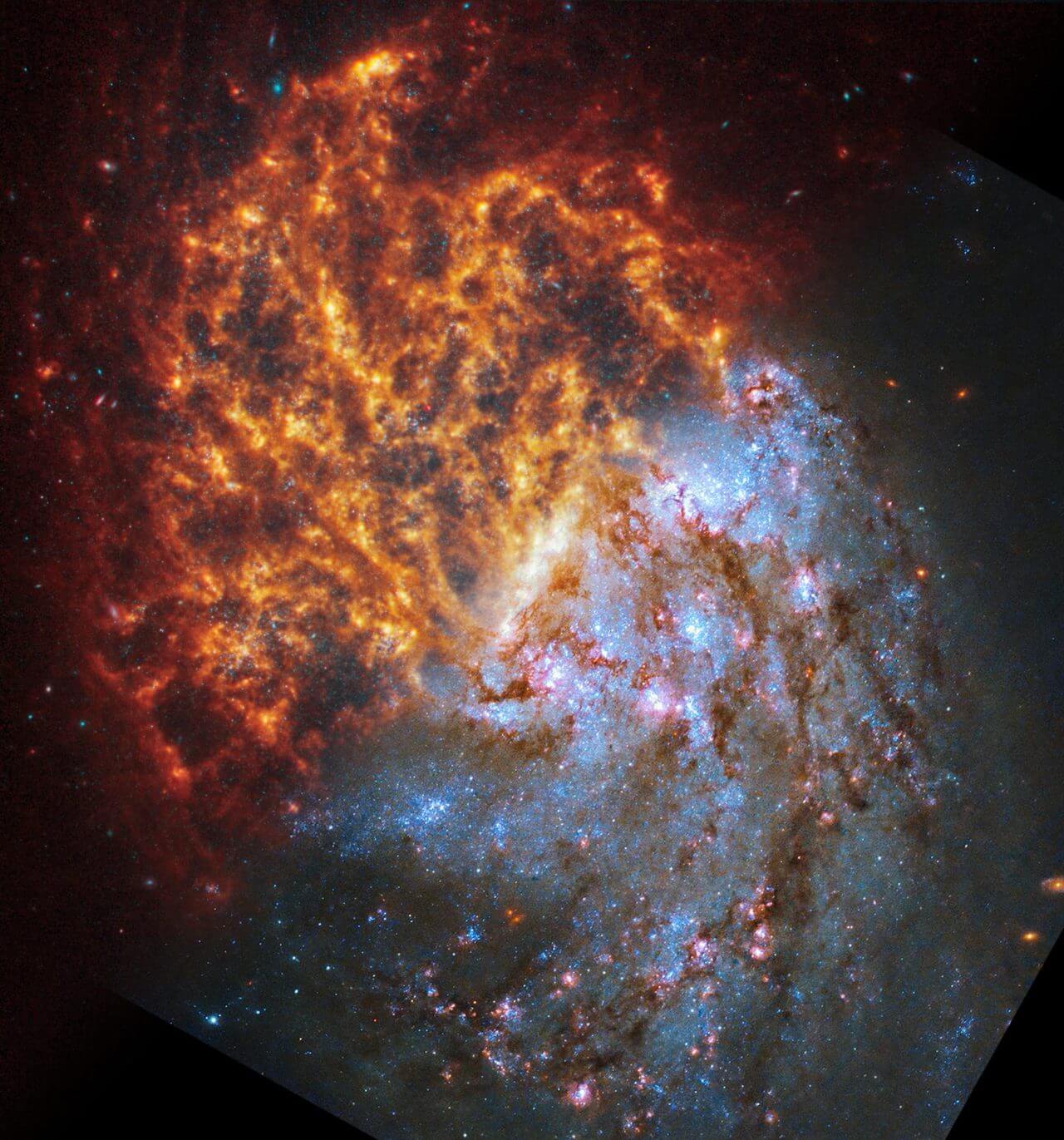This is NGC 1087, a spiral galaxy located about 80 million light-years away in the direction of the Cetacean constellation. It was created based on data acquired by the Near-Infrared Camera (NIRCam) and the Mid-Infrared Observing Instrument (MIRI) of the James Webb Space Telescope (JWST). Because the Webb Space Telescope primarily observes infrared wavelengths that cannot be seen by the human eye, the colors of published images are colored according to the filters used during acquisition.

According to the Space Telescope Science Institute (STScI), which operates the Webb Space Telescope, the NIRCam data (colored in blue and green) show that infrared radiation from hot young stars that appear blue in visible light is compared to the MIRI data (colored in green) And red).(Colored) shows the infrared rays radiated by dust that has absorbed ultraviolet and visible rays. Dust, which along with the gas becomes the raw material for new stars, is widespread throughout the disk of NGC 1087, and hot stars are densely packed here and there to form star clusters.
Next up is NGC 1087, observed by the Hubble Space Telescope's (HST) Wide Field Camera 3 (WFC3). The orientation and size have been modified to match the previously published Webb Space Telescope image, so some data may be missing. Comparing the two images, the areas where the dust distribution captured by the Webb Space Telescope is bright orange are also red or pink in the Hubble Space Telescope image, which indicates that they are star-forming regions that are actively producing stars, and you can see that it is.


The observation of NGC 1087 was carried out by the Webb Space Telescope as part of the PHANGS (Physics at High Angle Resolution in Nearby Galaxy) observing project, which targets galaxies in the nearby Universe. This project, which includes the Hubble Space Telescope, the ALMA radio telescope array in Chile, and the European Southern Observatory's (ESO) Very Large Telescope (VLT) at the Paranal Observatory in Chile, will provide high-resolution observations using electromagnetic waves of different wavelengths. They have been performed for several years to understand star formation.
The Webb Space Telescope, a new addition to the project, has observed bubble-like and thread-like structures that tell us about the star formation cycle on the smallest scale ever, surprising even researchers who have studied the same galaxy for many years. This means that there is. The image is initially one of 19 nearby galaxies observed by the Webb Space Telescope as part of the PHANGS project, and was released by STScI, the National Aeronautics and Space Administration (NASA) and the European Space Agency (ESA) in January. 29, 2024.
source
- STScI Webb and Hubble observations of spiral galaxy NGC 1087
- STScI NASA's Webb depicts stunning structure in 19 nearby spiral galaxies
- NASA NASA's Webb depicts stunning structure in 19 nearby spiral galaxies
- European Space Agency Webb reveals the structure of 19 spiral galaxies
Text Editing/Syrian Studies Department

“Travel maven. Beer expert. Subtly charming alcohol fan. Internet junkie. Avid bacon scholar.”






More Stories
It's better to call it a digital camera. The Xperia 1 VI lets you take any kind of photo | Gizmodo Japan
Google may be developing a new device called “Google TV Streamer” to replace “Chromecast”
What do you want to talk about? “Persona 3 Reload” recommendation campaign is running until July 31st! |.Persona Channel